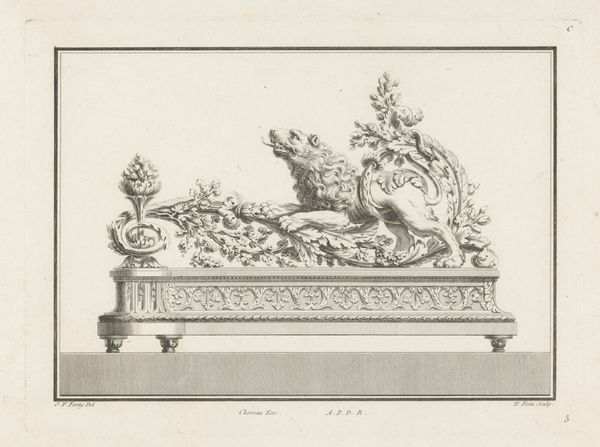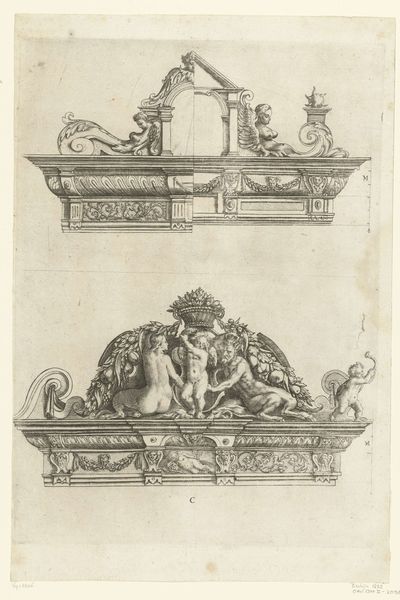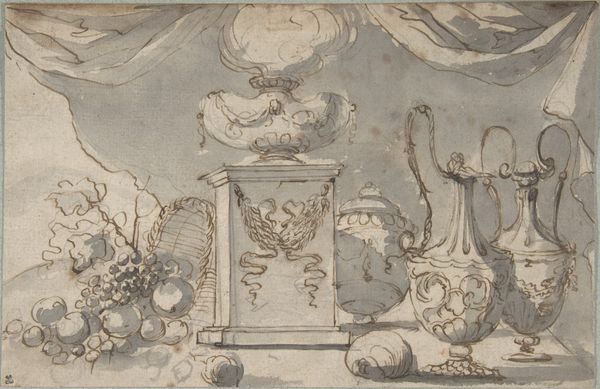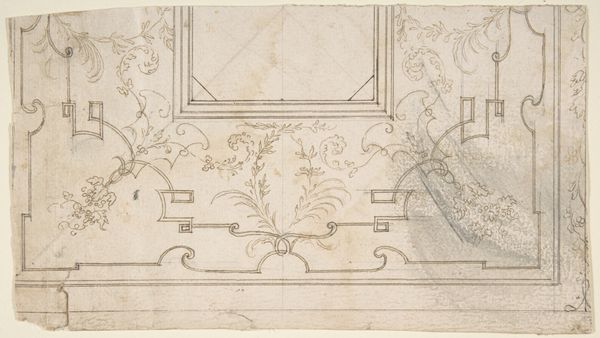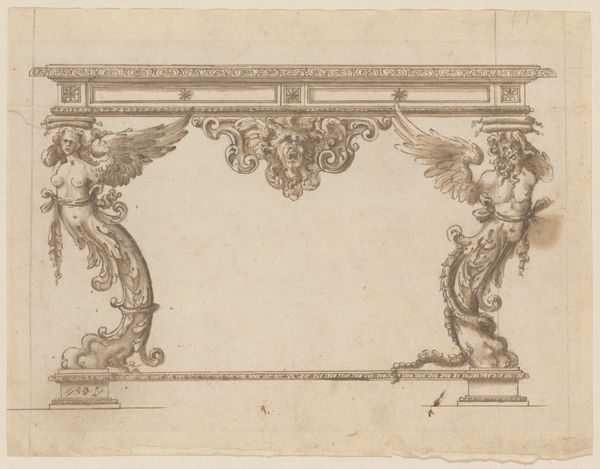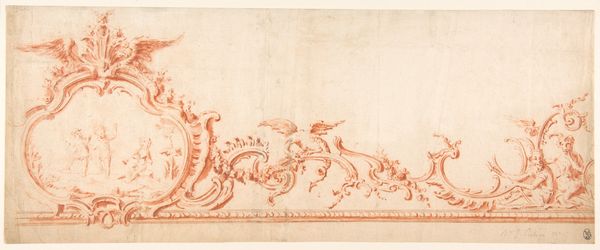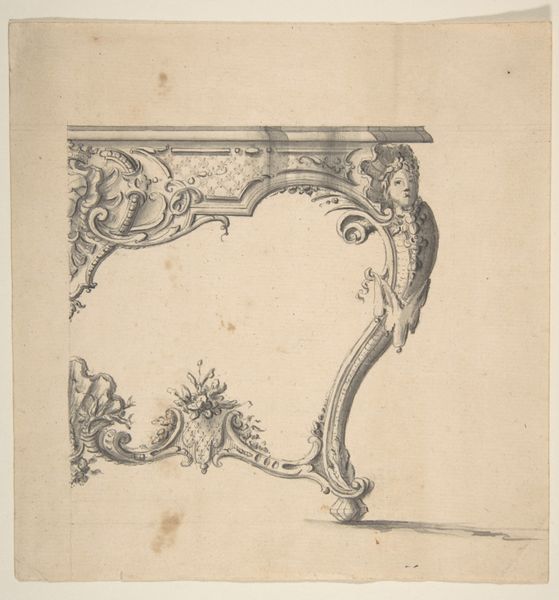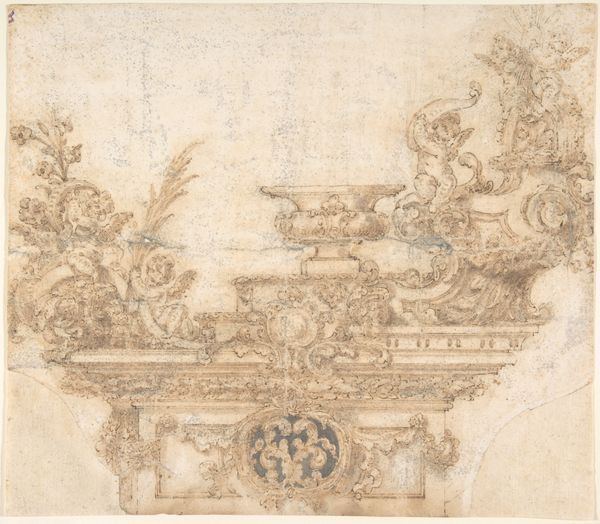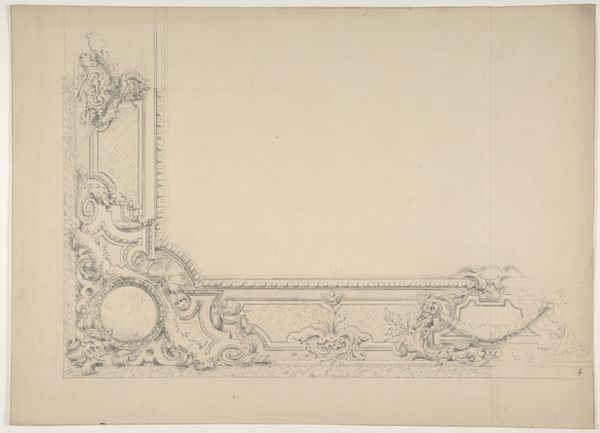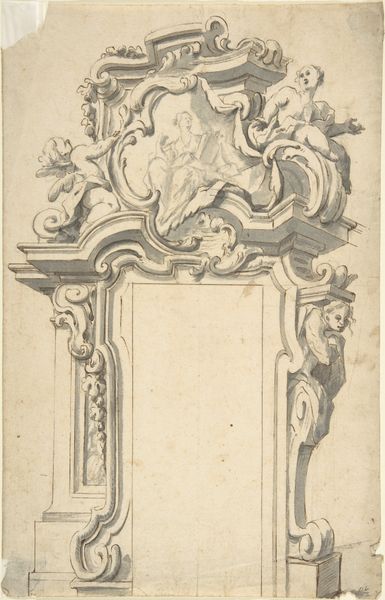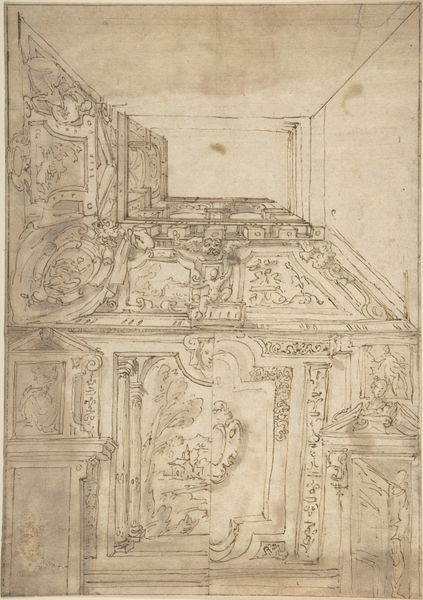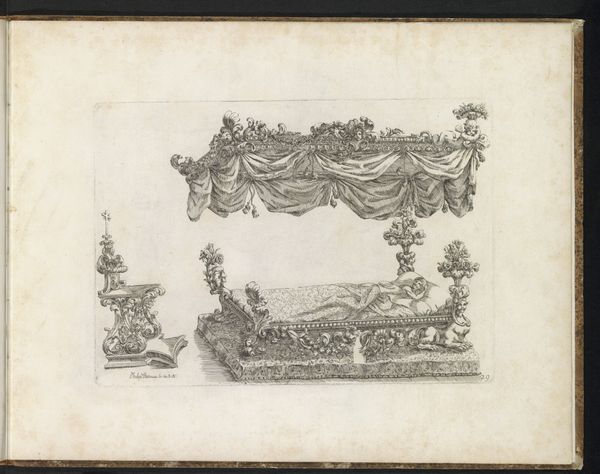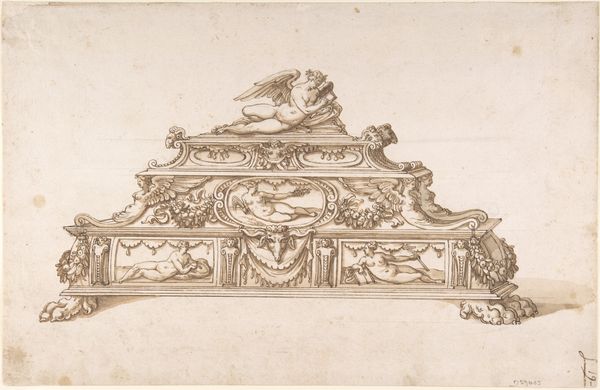
Design for One-Quarter of a Ceiling Decoration 1730 - 1797
0:00
0:00
drawing, print, etching, paper, ink
#
drawing
# print
#
etching
#
classical-realism
#
etching
#
paper
#
ink
#
geometric
#
decorative-art
#
rococo
Dimensions: 8 1/2 x 10in. (21.6 x 25.4cm)
Copyright: Public Domain
Curator: Well, what do you make of this delicate drawing, Leonardo Marini's "Design for One-Quarter of a Ceiling Decoration"? It was created sometime between 1730 and 1797 and rendered in ink on paper using etching and other printmaking techniques. Editor: My immediate impression is of airy elegance. The lightness of the etching combined with the flowing Rococo lines feels optimistic, even celebratory. Curator: Indeed! The Rococo style was a deliberate move away from the more rigid formality of the Baroque. This design reflects that societal shift towards lighter, more intimate spaces. The patronage system was changing, and art was finding new homes beyond the church and state. Editor: Absolutely. The cherubs flanking the central urn strike me. They’re not the powerful angels of religious iconography, but gentler spirits presiding over a domestic sphere. Curator: Precisely! They reflect a changing concept of authority, softer and more secular. Look closely, and you’ll see repeating motifs like wave patterns and stylized foliage. These patterns helped to establish a symbolic visual vocabulary. Editor: It feels like a very intentional effort to cultivate associations with wealth and luxury for those spaces. The geometric details work as symbolic language—almost coded status markers that viewers could readily recognize. It brings out the purpose of the drawing to show power in architectural design, literally ‘raising the roof’ to display prestige. Curator: Exactly. Remember that Marini was working within a culture where art served not just an aesthetic, but a clear social purpose. This ceiling wasn’t merely beautiful; it broadcast a particular message. The use of classical motifs, though softened by Rococo flourishes, consciously alluded to the grandeur of past empires. Editor: It's fascinating to think about how this one corner would've fit into the larger space. There’s also a sense of creative hope that lingers, a desire to make our spaces into stages where we perform the art of living, in splendor. Curator: It makes you realize that even what appears to be decorative, holds symbolic importance when you investigate cultural meaning and artistic purpose. Editor: It has certainly opened my eyes to how carefully curated and controlled these visual spaces would have been in shaping identity and reinforcing hierarchies!
Comments
No comments
Be the first to comment and join the conversation on the ultimate creative platform.
